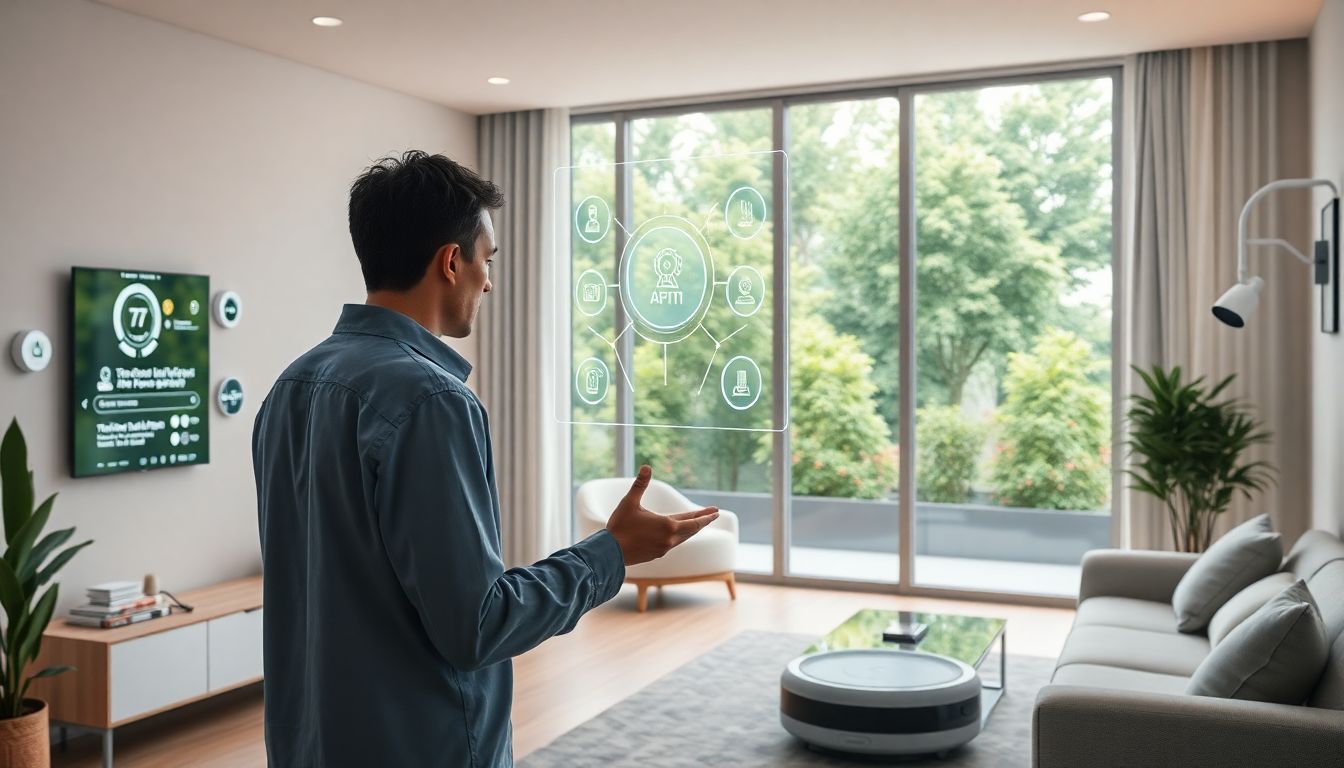
The Future of Home Automation: AI and IoT Integration in Smart Homes
Introduction
Smart home technology has grown faster than anyone expected. Today, connecting devices across your house is easier than ever. From smart thermostats to security cameras, the Internet of Things (IoT) is transforming ordinary homes into intelligent spaces. The real magic happens when AI joins this network. AI can make your smart devices smarter, faster, and more helpful. The benefits? Increased comfort, lower energy bills, better security, and a home that feels tailored just for you. The market reflects this trend—by 2025, smart home device sales are expected to hit $135 billion worldwide. It’s clear that AI and IoT working together will shape how we live in the future.
Understanding AI and IoT in the Context of Smart Homes
What is IoT and How Does It Power Smart Homes?
IoT, or the Internet of Things, is a web of devices connected to the internet. These devices collect data and communicate with each other without human help. In homes, IoT includes devices like smart thermostats, security cameras, and connected lights. They can be controlled through apps or voice commands. But, challenges like device security and making different brands work together still exist. Many gadgets use different systems, which makes smooth communication tricky.
The Role of Artificial Intelligence in Enhancing IoT Capabilities
AI uses smart algorithms like machine learning and natural language processing. These tools help smart homes understand and react to the data from connected devices. Instead of manually setting a thermostat, AI can learn your schedule and adjust temperatures automatically. It enables automation that feels natural and personalized. AI can also help predict issues—like detecting unusual activity on security cameras or alerting you to potential problems before they escalate.
Benefits of AI and IoT Integration in Smart Homes
Enhanced Security and Safety
Smart security systems powered by AI can tell the difference between a stranger and a family member. For example, AI-enabled cameras can recognize faces and send alerts if they spot a suspicious person. These cameras use analytics to filter false alarms and notify homeowners only when needed. AI can also help emergency responses by analyzing sensor data during fires or floods, making help faster and more accurate.
Energy Efficiency and Cost Savings
Smart thermostats are a good example of AI-powered home devices. They track your routines and learn when you’re home or away. This means no more wasting energy on heating or cooling an empty house. Sensors in your home monitor real-time energy use, giving you insights on how to cut costs. Over time, these small adjustments can lead to significant savings on utility bills.
Personalized User Experience
Imagine your home adjusting itself to your mood or preferences without a second thought. AI systems can personalize lighting, music, and climate based on your past choices. Voice assistants like Amazon Alexa or Google Home use AI to understand context, making conversations and commands more natural. Routine tasks like turning off the lights or playing music are automatically managed, giving you more time for what matters.
Challenges and Considerations in AI and IoT Integration
Data Security and Privacy Concerns
With so many devices connected, data security is a top issue. Hackers could access your personal information or even control your home systems. Strong passwords, encryption, and regular updates can help keep your devices safe. Regulations also require clear user consent when collecting personal data. Staying informed about these rules is key to protecting your privacy.[YOUTUBE]
Interoperability and Standardization Issues
Different brands and protocols can make devices refuse to work together. This fragmentation slows down smart home growth. Open standards and industry collaborations can ease these issues. When devices speak common languages and follow shared protocols, creating a unified smart home becomes much easier.
Ethical Implications and User Trust
AI must be transparent and fair. If a system makes decisions—like turning off security alerts—users should understand how it works. Giving users control over automation and data helps build trust. Responsible development and deployment of AI ensure consumers feel safe and in charge of their homes.
Future Trends and Opportunities
Advancements in AI Algorithms and IoT Hardware
New tech like edge computing allows devices to process data locally, reducing delays. Faster 5G networks also improve device responsiveness. These advancements make home systems more intelligent and quick to react, creating a more seamless experience.
Integration with Smart City Initiatives
Smart homes are just part of the bigger picture. They can help cities by reducing energy use and traffic congestion. For example, data from homes can help manage city-wide energy grids or traffic flow. Working together, homes and cities can boost sustainability and quality of life.
Actionable Tips for Consumers and Developers
Consumers should choose devices with strong security features and good reviews. Look for products that are compatible with your existing system. For developers, focusing on open standards and user-friendly design can make smart homes more reliable and trusted. Educating users about privacy and security is also essential for long-term success.
Conclusion
Integrating AI with IoT is changing home life fast. Your house can learn your routines, keep you safe, and save energy—all automatically. But to make the most of these benefits, we need to address security, compatibility, and trust. As technology advances, smart homes will become even smarter and more connected. Everyone—homeowners, makers, and cities—can benefit from this smarter future. Now is the time to embrace responsible innovation and build homes that truly adapt to our lives.



